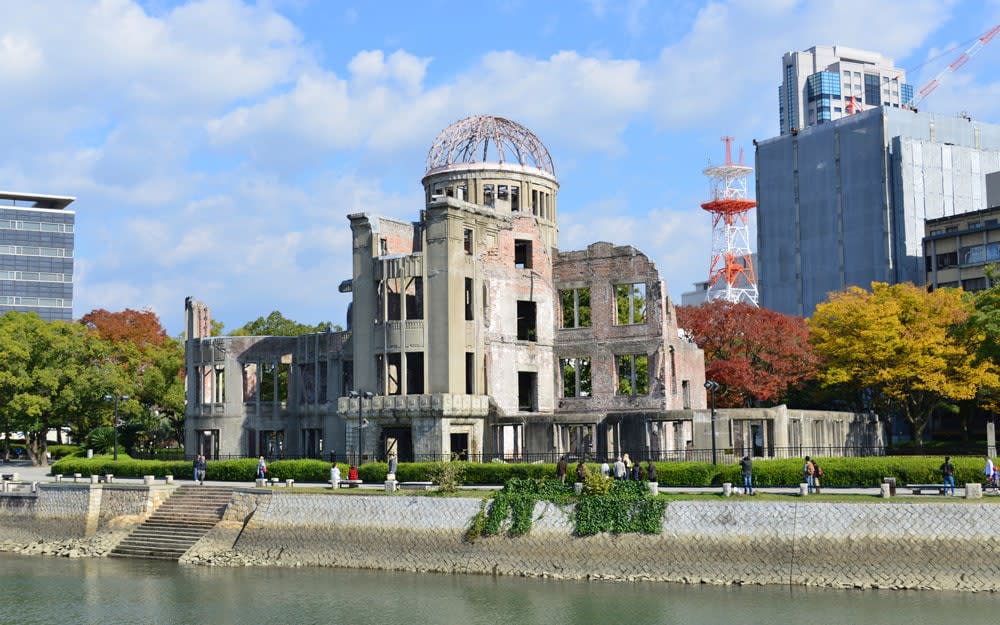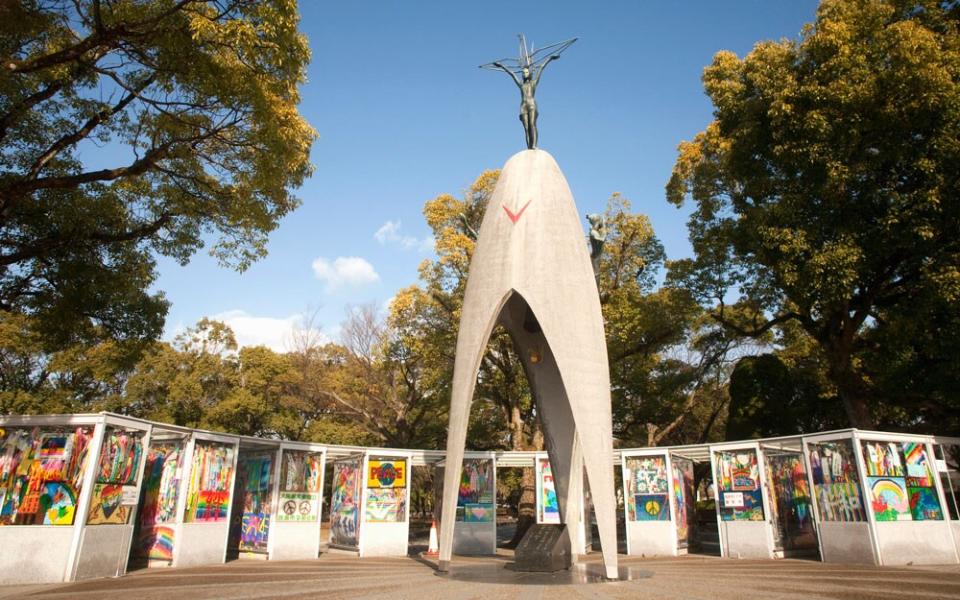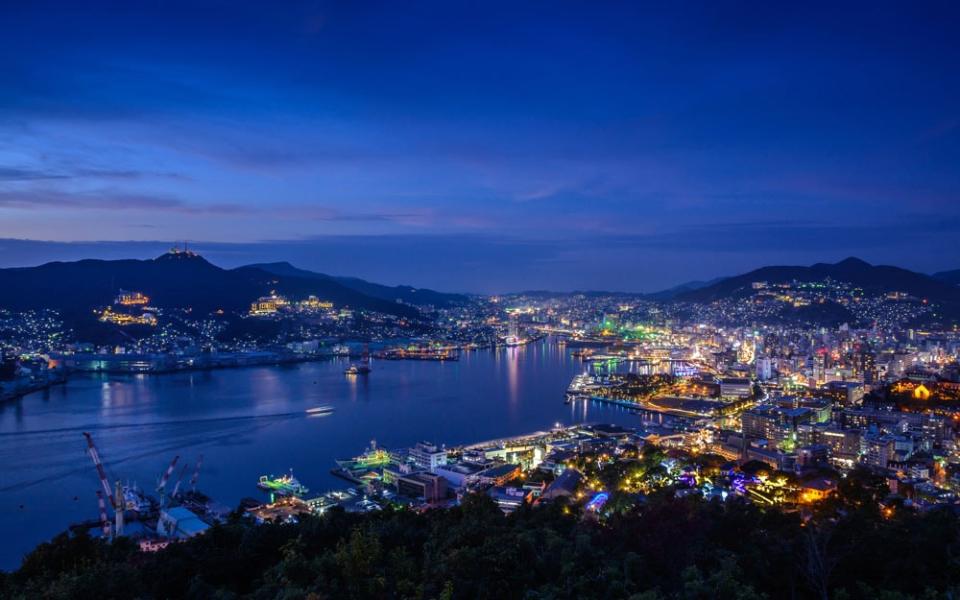What a trip to Hiroshima will teach you, 75 years on

You will read no more obvious a statement than the following words – but the footage that emerged from Beirut on Tuesday evening was appalling. And in a very modern way.
The blast which tore through the Lebanese capital – seemingly an accident involving highly explosive chemicals – would be a disaster in any decade. But 30 or so years ago, it would probably not have been seen. Its aftermath would have been dissected on TV news bulletins, yet the precise moment of ignition would have been a word-of-mouth affair, recounted by shell-shocked survivors.
Now, thanks to the unsleeping ubiquity of camera phones – and the endless-loop era of all angles and every perspective, all the time, that we live in – what happened on the eastern edge of the Mediterranean on an otherwise calm summer day is now everywhere, replaying over and over on your social-media feed.
This, in itself, gives the disaster an extra element of – unavoidable and unwitting – horror. But the most horrific thing about the images belongs to a different century. The last one. It is there as a ghost when that propelled wave of dust and combustion goes up – the brief hint of a mushroom cloud against the blue Middle Eastern sky. As I watched it again – and again and again, because which of us didn’t? – I found my mind drawn to Hiroshima.
How grimly appropriate. Today is the 75th anniversary of the first time – outside of a test range – that a mushroom cloud burst open in the firmament, casting its pall of death across the city in its shadow – with the second such “milestone” to follow on Sunday. Not that there is any other comparison between what occurred in Lebanon two days ago and the atomic bombings of Hiroshima (on August 6 1945) and Nagasaki (August 9 1945). Not in scale, in cost, or in intent. One was an unplanned catastrophe; the other two, deliberate acts of violence. But this week, they feel briefly and vaguely entwined in the pictures on our screens - the power of man-made conflagration etched in a million pixels.
Three quarters of a century on, those twin “incidents” in Japan are still shrouded in bleak controversy. The lines of discussion are old, well-worn, much repeated. Was the destruction of Hiroshima a necessary evil which headed off the prospect of a land invasion that would have devoured many more lives over many more months – or war as financial justification, designed to offer something to show for the vast sums invested in the Manhattan Project? Was the evisceration of Nagasaki three days later a reasonable knock-out punch, ending a conflict that had exhausted a planet over six brutal years – or a sledgehammer slammed down onto a walnut that had already shattered? The comments in defence are familiar too – the claim that the fire-bombing of Tokyo on the night of March 9-10 1945 – warcraft via more “conventional” means, which has attracted a little less criticism – may have claimed more victims (up to 130,000); the argument that Imperial Japan was an enemy every bit as vicious and determined as that which rose in Germany.
But the shock factor remains, all the same. You can see Hiroshima’s demise online, of course – Enola Gay taxiing into position on the Tinian runway, the mushroom cloud billowing in black and white above the city at the south-west end of Honshu, the same place shown, hours later, in jump-cut footage, not so much crumbled to rubble as all but wiped from the map. The footage is, inevitably, sparse and grainy, but it still has a power.
Your sense of shock is increased if you properly set foot in this scar, not just on modern-day Japan, but on the human soul. I visited Hiroshima for the first time three years ago. I am not sure what I was expecting. Not a historical theme park devoted to the summer of 1945, certainly – but not what I encountered either. For the first few hours, I could not fully identify what I found so unnerving – emerging from the train station to which the shinkansen had delivered me at astonishing speed; the neon signs and relentless glow of the shops around the centre, the apartment buildings above them angular and anonymous.
And then it struck me, as a delayed reaction. The shocking thing about Hiroshima is its uniform newness. Its flatpack rebirth as a symbol of 20th and 21st century Japan. Because it had to be that way. Because almost everything that came before was deleted at a stroke.

It is this, as much as the Peace Memorial Park – where the key ruins of the bomb blast are protected – which chills your footsteps. Although those remnants, so famous now, have an effect too – the A-Bomb Dome (the former Hiroshima Prefectural Industrial Promotion Hall) skeletal and fractured, the iron that once sustained its roof like a broken spider-web; the Children’s Peace Memorial - a single child (Sadako Sasaki, a girl, two at the time of the bombing, who subsequently died of leukaemia) captured in statue form, her arms lifted skyward; the Peace Memorial Museum, with its many silent “witnesses” to what happened – the charred tricycle, the scorched doll, the coins half-melted by the heat.
I saw it all in the company of a guide, old enough to have been there when the bomb dropped, still young enough to tell me her story. When we were finished, she took me to her home, poured me tea, made me a series of origami “sculptures”, her fingers a blur of dexterity as she folded the paper. One of them, a crane in flight, sits on my desk as I write this feature.
Perhaps oddly, I had already been to Nagasaki. Six years ago now, I found myself on Kyushu, the westernmost of Japan’s four main islands. I was there for work, for a travel story unrelated to the echoes of 1945 – but I decided that I had to pay a visit to a city whose suffering is often dismissed as a footnote to Hiroshima’s. In retrospect, perhaps I felt a greater sense of shock there – not, this time, at the newness of it all (because, cocooned in the Urakami Valley, Nagasaki is sheltered by mountain ridges, so that half of it survived the explosion, clinging on as a reminder of how the city looked on August 8 1945, temples and torii gates on narrow streets), but at its smallness. Nagasaki is a port, and a literal end of the line – the bullet train slowing to a stop at the buffers in the station – but not a big place. Pulling in here feels not like coming into some colossal metropolis (which, once upon a time, I had imagined it to be. Because if you are going to cut a city down in such an indiscriminate manner, then, surely, it must be a sprawling urban centre of undeniable strategic importance; an obvious target). It feels like pulling into Norwich.

But then, Nagasaki was not an obvious target. At least, not a first choice. This is part of its tragedy. It had been Kokura (now Kitakyushu) that had been selected as the second course to Hiroshima’s starter. But bad weather and poor visibility on August 9 meant that Bockscar could not see the city clearly enough to drop “Fat Man” with the required accuracy. So the B-29 proceeded along the northern edge of Kyushu, and found that the clouds parted just as it was passing over Nagasaki. At 11:01am, the weapon was let loose.
Perhaps it is that Hiroshima has become almost a postcard – a case study, held up to the light – where its colleague is often an afterthought, but Nagasaki seems to wear its pain more darkly. On my three days in the city, I did not find the number of tourists who flock to Hiroshima’s Peace Memorial Park, or many tourists at all – although a sibling site exists, the Nagasaki Peace Park. There is at least a commitment to optimism here, to life continuing – particularly in the giant statue by the artist Seibo Kitamura; a seated man, 30ft tall, arms open, eyes closed, an olive branch in bronze. But elsewhere, there is an unvarnished starkness to the memento mori. The Urakami Cathedral wears its damage openly, its original belfry still lying dead in the grass alongside the building, where it fell 75 years ago; Hypocentre Park marking the exact Ground Zero with a simple column of black basalt, and the statue of a mother cradling her child; the National Peace Memorial Hall, with its cool, calm ambience, and its heavy volumes, filled with survivor testimony.
Is it “dark tourism” to walk in these streets – to visit Hiroshima and Nagasaki so long after they became symbols of mankind at its worst? I have never thought so. Their stories are desperate, awful – even with the distance of three quarters of a century. But they need to be told, over and over. Not just today, or on Sunday, but on any day, and on every day.


